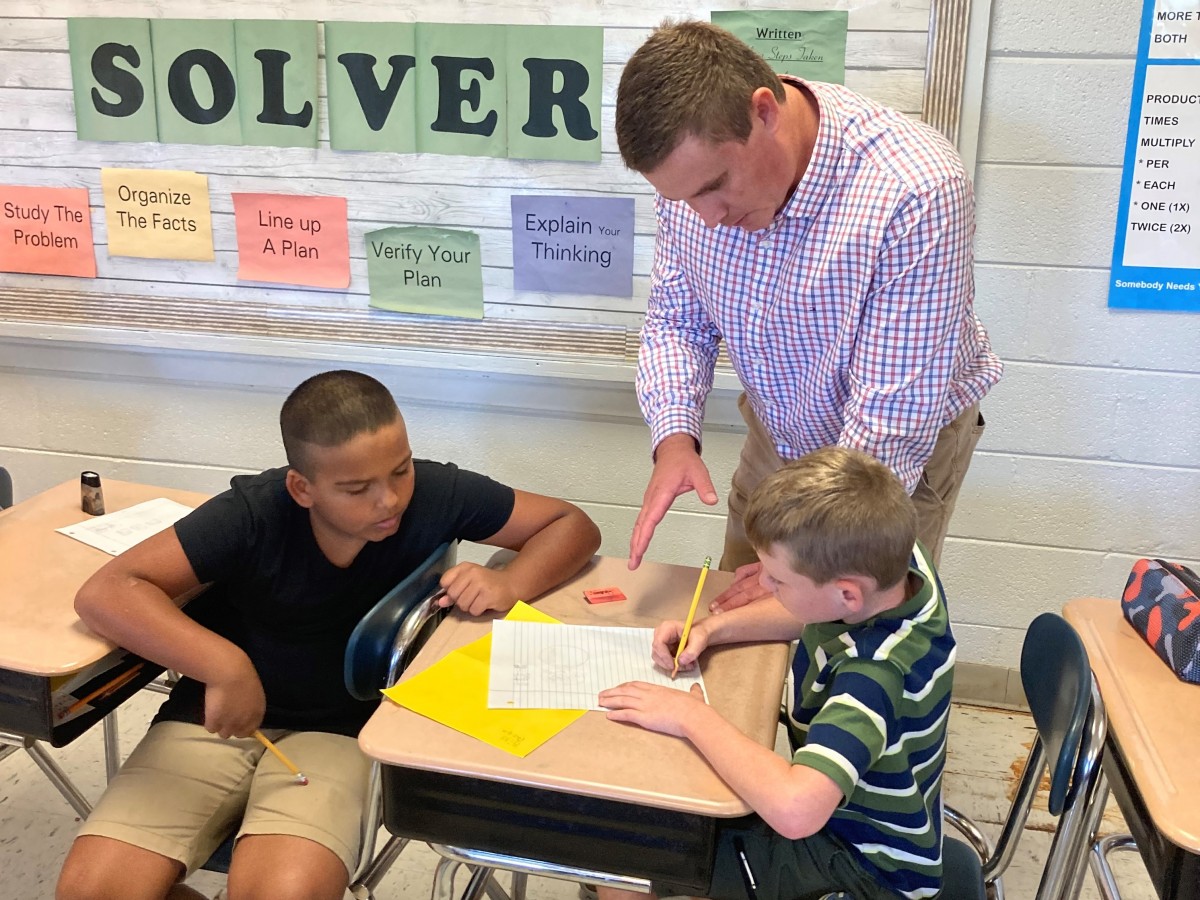We Need Each Other: Strengths-based Coaching by School Leadership Teams
August 31, 2022

In 2020, Decatur County School District in rural west Tennessee joined a network of other small districts to strengthen teaching and learning across classrooms through a partnership with the nonprofit National Institute for Excellence in Teaching, the Ayers Foundation, the Ayers Institute, and the State Collaborative on Reforming Education. The Tennessee Rural Acceleration and Innovation Network (TRAIN) played a critical role during the pandemic, enabling districts to problem-solve, share what was working, and receive coaching and support to build educator effectiveness. Reflecting on the partnership’s work, Director of Schools Chris Villaflor and Riverside High School Principal Hugh Smith identified the use of the Tennessee Educator Acceleration Model (TEAM) as a tool for self-reflection and strengths-based coaching as core elements of success.
Using the TEAM rubric to reflect on teacher practice
The TRAIN partnership began with a strengths-based needs assessment which built trust with teachers through collaborative conversations about teaching and learning. “This experience was one of the best of my 12 years as an administrator,” said Villaflor. “We took a strengths-based approach in training our leadership team and together we analyzed school data and survey information and identified areas of focus for each school. The small size of the district and its schools has historically made it hard to find time for teachers to collaborate and support each other. Teachers were asking for more time for collaboration, and district leaders came up with a plan for how to provide it.” Collaborative learning teams were organized by subject area: math, English language arts, science/technology, and social studies/art. Each team meets for 45 minutes a week, before school starts.
The collaborative teams use the Tennessee Educator Acceleration Model (TEAM) rubric as a reflective tool to analyze teacher practice and develop plans for improvement. Using TEAM, three areas were identified as immediate needs by teachers: thinking and problem solving, activities and materials, and questioning. Collaborative teams brought in student work, including end of course data, ACT data, and daily classroom activities, to analyze whether student work aligned to grade-level expectations in the state standards. They identified specific ways that teacher practices could be strengthened to address student learning needs.
“I am currently completing my 4th year as Director,” said Villaflor. “Looking back to before we began working with NIET and joined the TRAIN network, I did walk-throughs of classrooms and would leave the teacher a short note with some feedback. We didn’t talk as a leadership team about how we could support individual teachers based on our observations. We had a lot going on with initiatives, people were in and out of teachers’ classrooms, but the focus was not on instructional practices and there was not nearly enough clarity, communication, or coherence around those practices. Strengths-based coaching has given us a way to focus on what we want to look for, and to create a model of coaching that is viewed by teachers as supportive.”
District and school leaders now talk directly about what to look for in classrooms, including what students are doing and what student work looks like, using the rubric as a tool. Each teacher’s classroom has a notebook used to share observations and feedback. This creates transparency as the teacher can read the notes and see comments, questions, and feedback. Leaders use the notes as a coaching opportunity, and to ensure that everyone is using consistent messaging based on the rubric indicators. It creates consistency for the teacher and more of a team approach.
Connecting instructional feedback to strengths-based coaching
Strengths-based coaching modeling by NIET provided an opportunity for leaders to make connections to the TEAM rubric as a collection of best practices. “For example, teachers know their content area, but they are not always asking high level questions and engaging every student in questioning,” said Hugh Smith, Principal of Riverside High School. “We can make that a clear expectation and each person going into that classroom can provide feedback and support on how the use of questioning can support each student’s learning.”
Villaflor shared a recent example of how teachers are strengthening their use of questioning in a 4th grade math class. “The teacher asked students to come up and explain their answers,” said Villaflor. Then he asked, ‘did anyone do it a different way?’ and, ‘what is the best wrong answer?’ Allowing kids to show how they got their answers, see different ways of solving the problem, and talk about the best ‘wrong’ answer created an environment where kids were listening to each other, and were highly engaged.” Using the practices described in the TEAM rubric helps leaders to ask, every day: do students have the opportunity to think, problem solve, speak, and interact? Teachers are supported to create this opportunity for each student.
The best professional learning is student-driven, creates opportunities for teachers to develop leadership skills, creates more buy-in across the faculty, and builds a more collaborative culture. Strengths-based coaching has created opportunities for professional growth and development, and made collaborative professional learning more engaging, timely, and relevant for teachers as they see connections between student needs and their own practices. “When we have the right structures and tools to work as a team, we see an enormous difference,” said Villaflor. “We need everyone to be on board, and we need each other to reach our goals.”